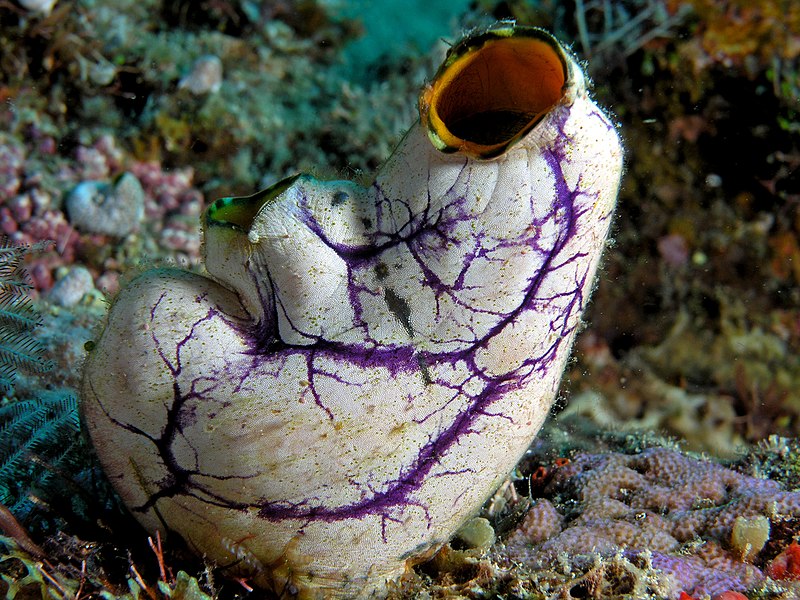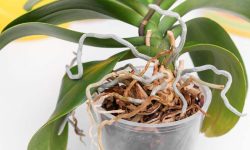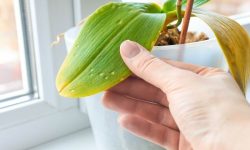Yes, sea tulips are tunicates. They are a type of marine invertebrate that is closely related to ascidians. Sea tulips are filter feeders and use their siphons to draw in water and trap food particles.
They are found in both shallow and deep waters around the world and come in a variety of colors.
Tunicates are a type of marine invertebrate that is closely related to sea squirts. They are often called “sea tulips” because of their flower-like appearance. Tunicates are found in all oceans, from the shallowest tide pools to the deepest depths of the ocean floor.
While they may look delicate, tunicates are actually quite tough creatures. Their bodies are encased in a hard, tube-like shell that protects them from predators and harsh conditions. Tunicates feed by filtering tiny particles of food from the water around them.
Despite their simple appearance, tunicates are an important part of the marine ecosystem. They provide food for a variety of animals, including fish, crabs, and shrimp. They also help to keep water clean by eating algae and other debris.
Swaying Sea Tulips
Are Sea Squirts Poisonous
Sea squirts are not poisonous to humans, but they can be a nuisance if they attach themselves to boats or docks. They are filter feeders that remove plankton and other small organisms from the water, which can help keep waterways clean. However, their excrement is often high in nitrogen and phosphates, which can lead to algae blooms.
Are Sea Squirts Edible
Yes, sea squirts are edible. They have a slightly sweet taste and a firm texture. Some people compare their taste to that of a cucumber.
Sea squirts can be eaten raw, cooked, or pickled.
Sea Squirt Species
Sea squirts are a type of filter-feeding marine invertebrate that are closely related to vertebrates. There are over 1,500 species of sea squirts, which vary in size, shape, and color. Sea squirts are found in all oceans, from the shallowest waters to the deepest depths.
Most sea squirts attach themselves to hard surfaces such as rocks or shells using a sucker-like disk on their underside. They then use their tube-like siphons to filter plankton and other small organisms from the water for food. Sea squirts play an important role in maintaining the balance of marine ecosystems.
Some sea squirt species are harvested for food, while others are used in traditional Chinese medicine. Sea squirt extract is also being studied for its potential use in treating cancer and other diseases.
Pyura Spinifera
Pyura spinifera is a type of ascidian, or sea squirt, that is found in the southern parts of Australia. It is a sessile animal, meaning that it does not move around much once it has settled into an area. The Pyura spinifera gets its name from the Latin words for “spine” and “bearing,” referring to the spines on its body.
This creature has a fascinating life cycle. It starts out as a free-floating larva, before settling down onto a hard surface and undergoing metamorphosis into an adult. The adult Pyura spinifera looks like a tube with two siphons at one end; these siphons are used for feeding and excretion.
The Pyura spinifera is filter feeder, using its siphons to draw in water and then trap small particles of food in mucus membranes. These particles are then transported to the mouth, where they are eaten. Predators of the Pyura spinifera include crabs, fish, and starfish.
The Pyura spinifera is sometimes called the “living rock” because it is often encrusted with barnacles and other marine growths. This ascidian is usually dark brown or black in color, but can also be bright red or orange. It can grow up to 20 cm (8 inches) long, although most individuals are much smaller than this.
Despite its unassuming appearance, the Pyura spinifera is an important part of the marine ecosystem in which it lives. It provides shelter for other creatures and helps to keep algae growth under control by consuming large amounts of phytoplanktonic algae.

Credit: en.wikipedia.org
What is a Sea Tulip And Why is It So Important?
A sea tulip is a type of marine flower that is found in shallow waters around the world. They are an important part of the ecosystem because they provide food and shelter for many marine creatures. Sea tulips are also a source of nectar for bees and other pollinators.
Are Sea Tulips Animals?
No, sea tulips are not animals. They are actually a type of algae that is often found in tide pools or near the shoreline. While they may look like flowers, they do not have any petals or leaves.
Instead, their beautiful colors come from the pigment cells that are found in their tissue.
What Family are Sea Squirts In?
Sea squirts are in the phylum Chordata, which contains all animals with a spinal cord. They’re in the subphylum Vertebrata, which contains all animals with a backbone. And they’re in the class Ascidiacea, a group of marine invertebrates that also includes tadpoles and lancelets.
What Do Sea Tulips Eat?
Sea tulips are a type of filter-feeding marine invertebrate. They get their name from their flower-like appearance and can be found in a variety of colors, including pink, purple, and red. Sea tulips use their tentacles to capture food particles from the water column.
These particles are then passed to the mouth, where they are filtered out and eaten.
Why are Tunicates Called Sea Squirts?
Tunicates are marine animals that belong to the phylum Chordata. They are also known as urochordates. Tunicates are named after their outer covering, which is called a tunic.
This tunic is made of a substance called cellulose and protects the animal from predators and parasites.
The name “sea squirt” comes from the fact that these animals tend to release water when they are disturbed. This watery discharge is actually how they filter their food from the surrounding seawater.
Sea squirts are found all over the world in both shallow and deep waters. Some species are even found in freshwater habitats. These animals can vary greatly in size, with some being only a few millimeters long, while others can reach up to 30 centimeters in length.
Can Cats Have an Allergic Reaction to Tulips?
Cats and tulip allergies can be a concern for pet owners. Tulips, specifically their bulbs, contain substances that may cause allergic reactions in cats. Symptoms may include vomiting, diarrhea, and skin irritations. It’s crucial to keep cats away from tulips and consult a veterinarian if any signs of allergy appear.
Where Sea Squirts are Found?
Sea squirts are found in all the world’s oceans, from the surface to the deep sea. There are more than 1,500 species of sea squirts, and they come in a variety of shapes and sizes. Some sea squirts attach themselves to rocks or other hard surfaces, while others drift freely in the water.
Can Broken Tulips Still Be Considered Healthy?
Despite their imperfections, broken tulips can still be considered healthy. While their petals might be torn or damaged, the overall health of these flowers can still be maintained. Just like people, tulips can still thrive and blossom beautifully, even with some visible flaws. So, broken tulips health is not something to be concerned about they can still bring joy and beauty to any garden or bouquet.
Conclusion
Sea tulips are a type of tunicate, which is a marine invertebrate animal that belongs to the phylum Chordata. Tunicates are also known as sea squirts because they expel water when disturbed. Sea tulips are sessile creatures, meaning they attach themselves to surfaces and do not move around much.
They can be found in all oceans, attached to rocks, shells, or other hard surfaces.
Sea tulips get their name from their flower-like appearance. They have a central body with two siphons (tube-like structures) that protrude from opposite sides.
The body is surrounded by fronds (leaf-like structures) that vary in color from white to orange to purple. Sea tulips range in size from 1/2 inch to 6 inches across.
Despite their pretty appearance, sea tulips are actually carnivorous animals that feed on small crustaceans and fish.
They use their fronds to trap their prey and then draw it into their mouths with their siphons. Sea tulips reproduce by releasing eggs and sperm into the water where fertilization takes place. The eggs hatch into free-swimming larvae that eventually settle on the bottom and transform into adults.






